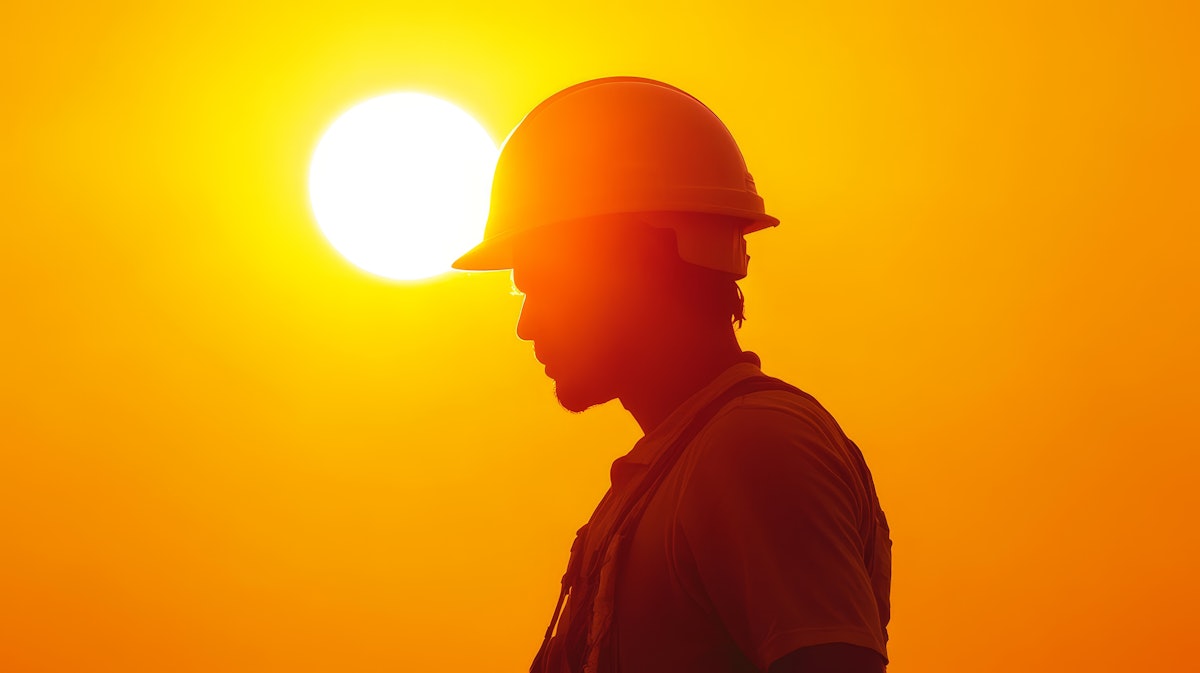As temperatures climb across the U.S. ahead of the summer months and peak season, heat safety becomes a top concern for construction crews working long hours outdoors. With the construction industry already facing tight deadlines and demanding physical labor, extreme heat only adds another layer of risk that must be managed proactively.
Dan Carpenter, project executive at Curran Young Construction in Florida, understands this challenge well. His team works year-round in one of the nation’s most hot and humid climates, making heat safety not just a seasonal consideration, but a core part of the company’s culture.
“We prepare our crews through a combination of scheduled water breaks, mandatory rest periods, shaded recovery zones and a structured heat acclimatization plan,” Carpenter said. “Our crews are trained to monitor themselves and each other for early signs of heat stress, and we emphasize daily hydration and recovery strategies to keep everyone safe.”
Leadership Sets the Tone
Creating a culture of heat safety starts at the top. Supervisors at Curran Young Construction take a hands-on approach by monitoring weather conditions and ensuring strict adherence to rest, hydration and acclimatization schedules. New and returning workers are gradually reintroduced to jobsite conditions and are paired with more experienced “heat buddies” to help identify early signs of heat-related issues.
“Leaders set the tone by modeling safe behaviors and treating heat safety as a top operational priority,” Carpenter said.
Formal Protocols Reinforce Best Practices
It’s crucial to adhere to OSHA and NIOSH heat safety guidelines, and teams can supplement those with internal policies designed for maximum effectiveness. These include:
- Drinking one cup of water every 15–20 minutes
- Mandatory hourly rest breaks in shaded areas
- Adjusted workloads during peak heat hours
- Supervised acclimatization periods for new or returning workers
- Comprehensive emergency response plans
Flexibility is essential when dealing with heat advisories or dangerous spikes in temperature. Carpenter said that during extreme conditions, work may begin well before dawn to avoid the hottest part of the day, usually between noon and 4 p.m.
“We reduce workloads, extend rest breaks, and utilize cooling stations more frequently,” he said. “Supervisors have the discretion to stop work if conditions become unsafe.”
Training and Equipment Make a Difference
All workers receive monthly training on heat-related risks, including how to differentiate between heat exhaustion and heat stroke, proper hydration practices and emergency procedures.
Curran Young crews also rely on innovative personal protective equipment (PPE) and gear designed to beat the heat, such as breathable, moisture-wicking clothing, ventilated hard hats, cooling vests, and portable AC units at recovery stations.
“We rotate heavy PPE out when crews are in shaded or low-risk areas to reduce heat retention,” Carpenter added.
Staying Vigilant This Construction Safety Week
As we recognize Construction Safety Week, now is the time for all industry stakeholders to evaluate their approach to heat safety. Whether you’re working in Florida’s sweltering humidity or facing dry heat in the Southwest, prioritizing hydration, rest, education and leadership can mean the difference between safe conditions and serious health risks.
Construction may not stop for the heat, but with the right precautions, neither should safety.
View the original article and our Inspiration here


Leave a Reply